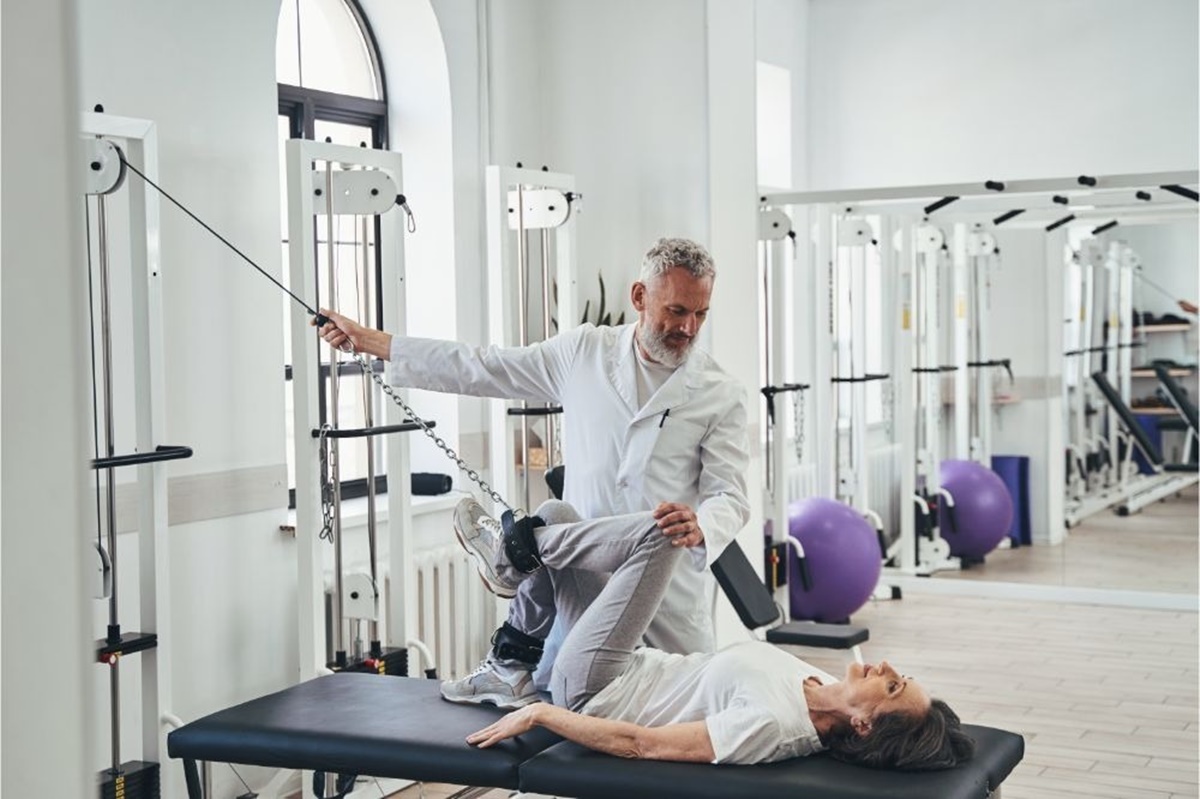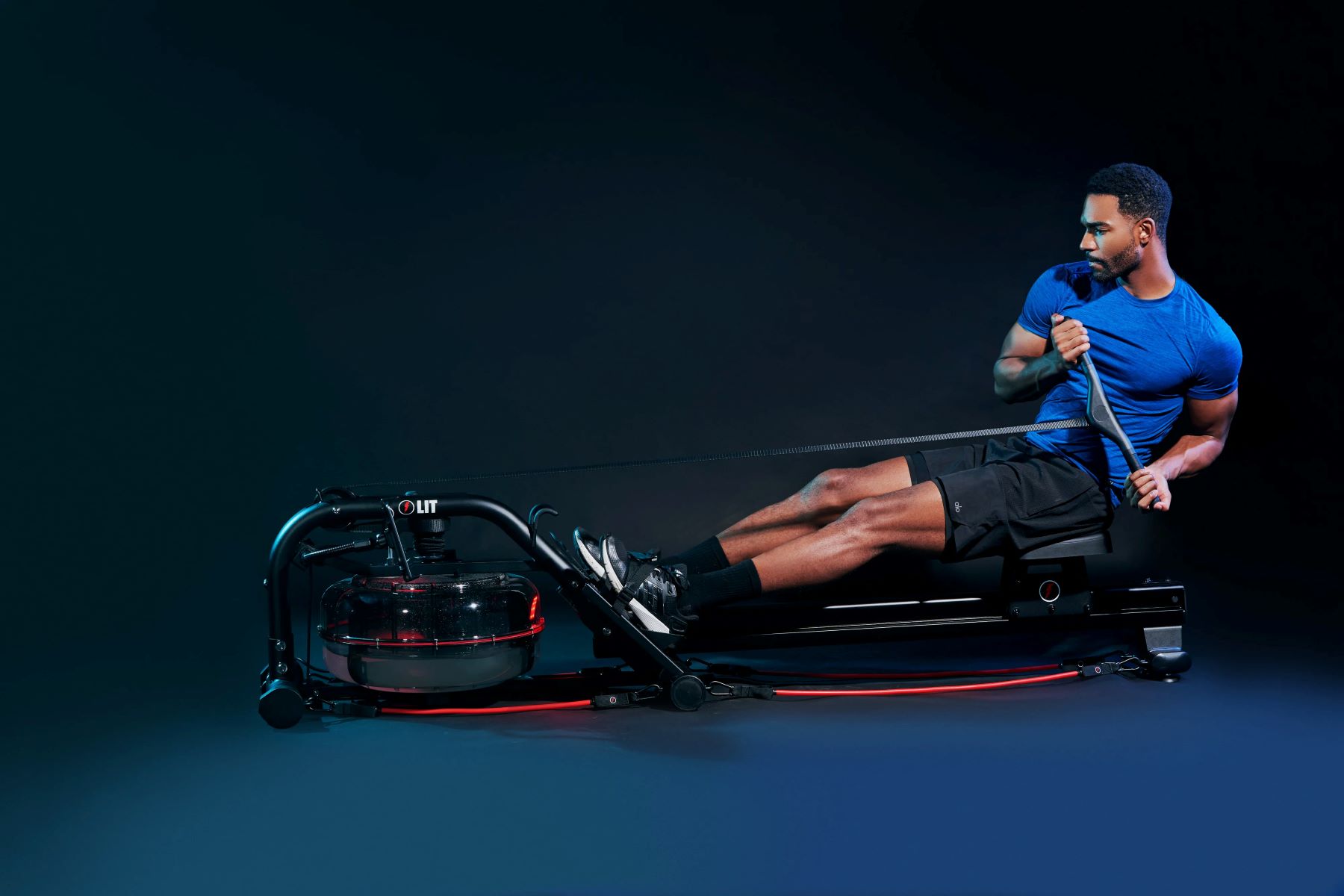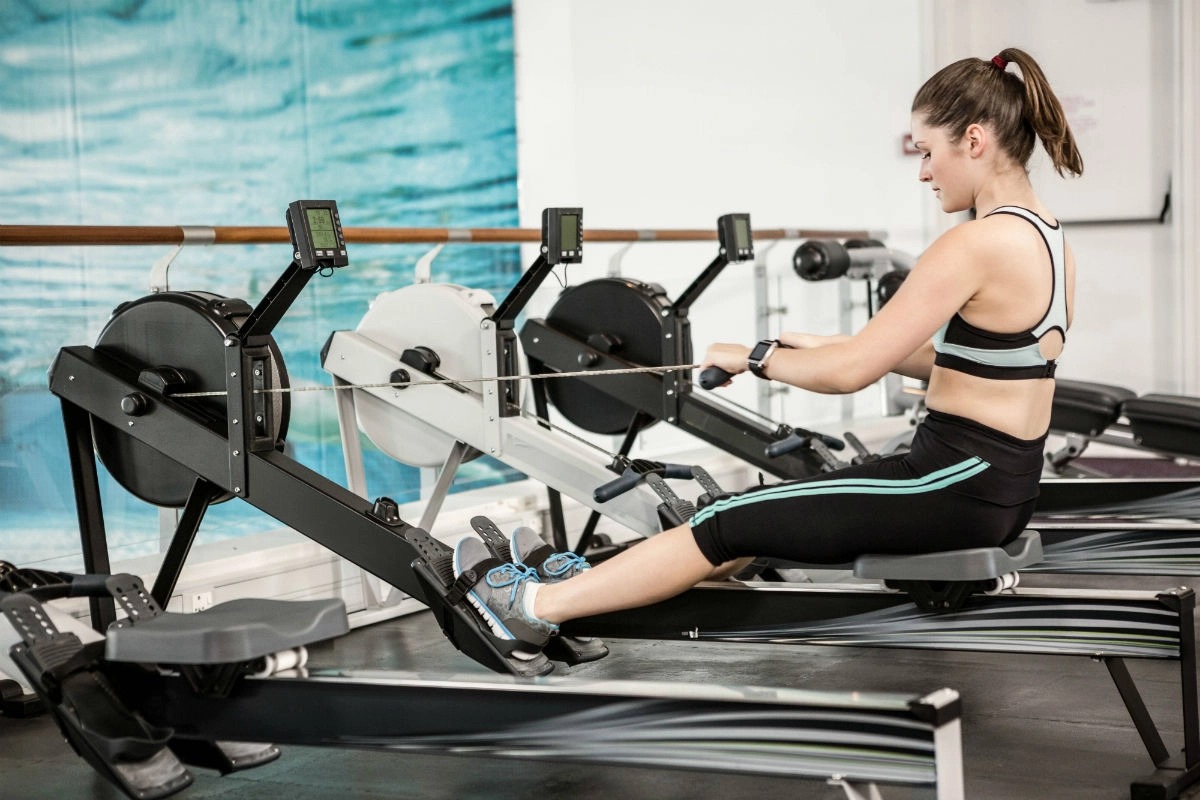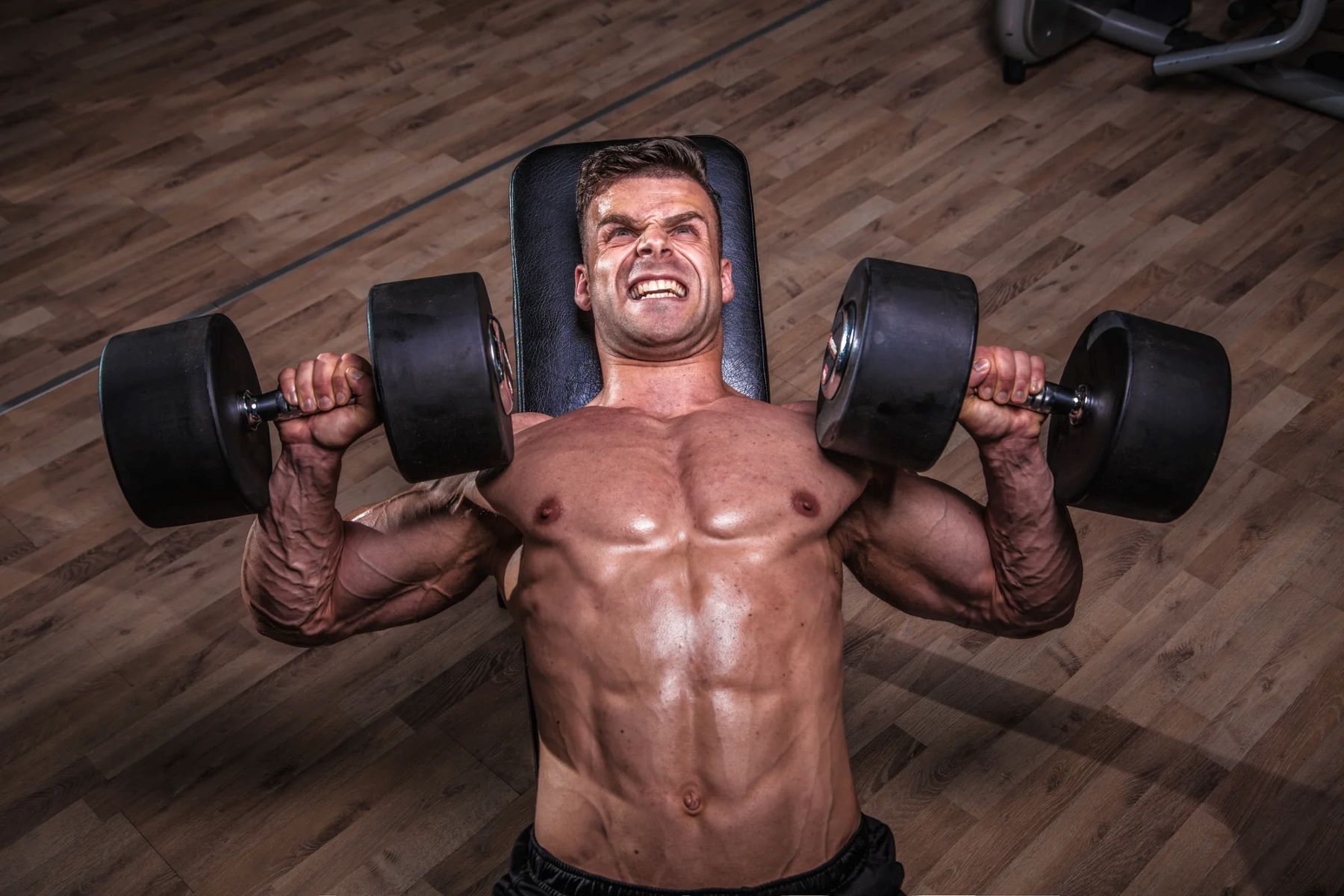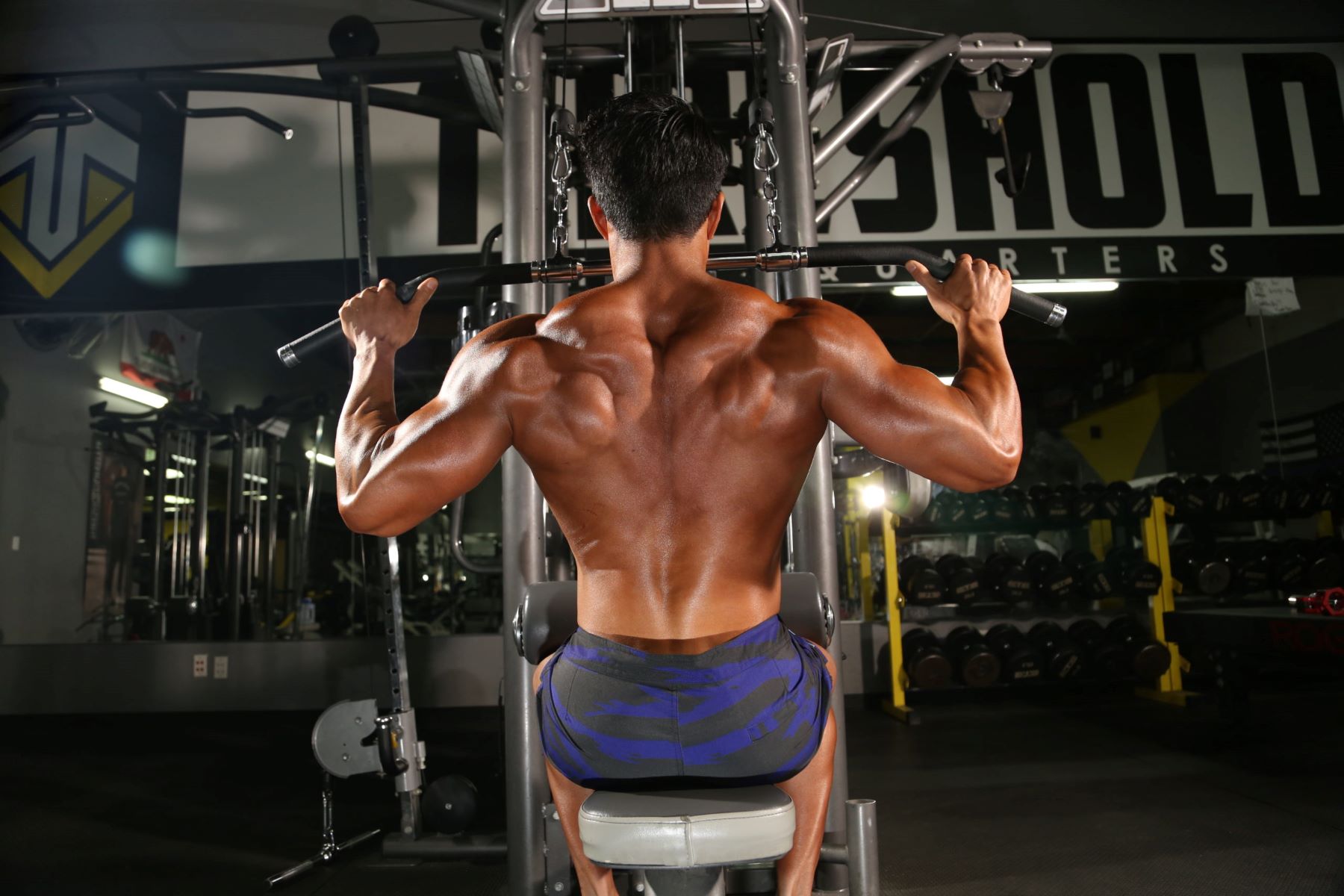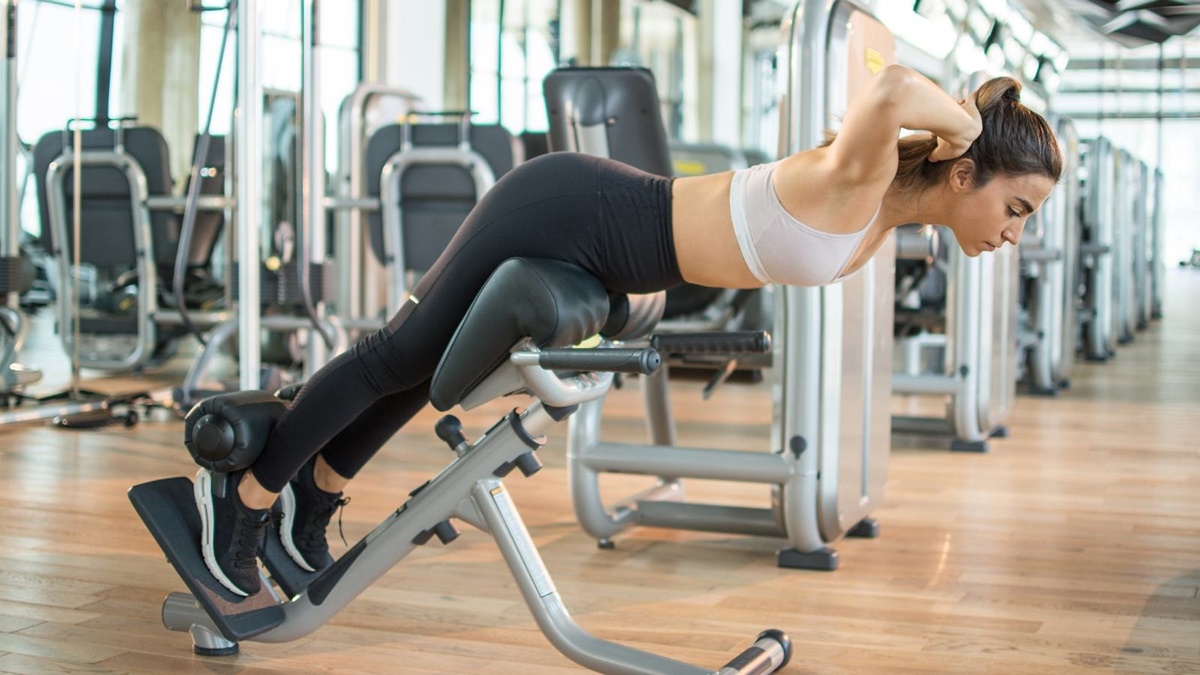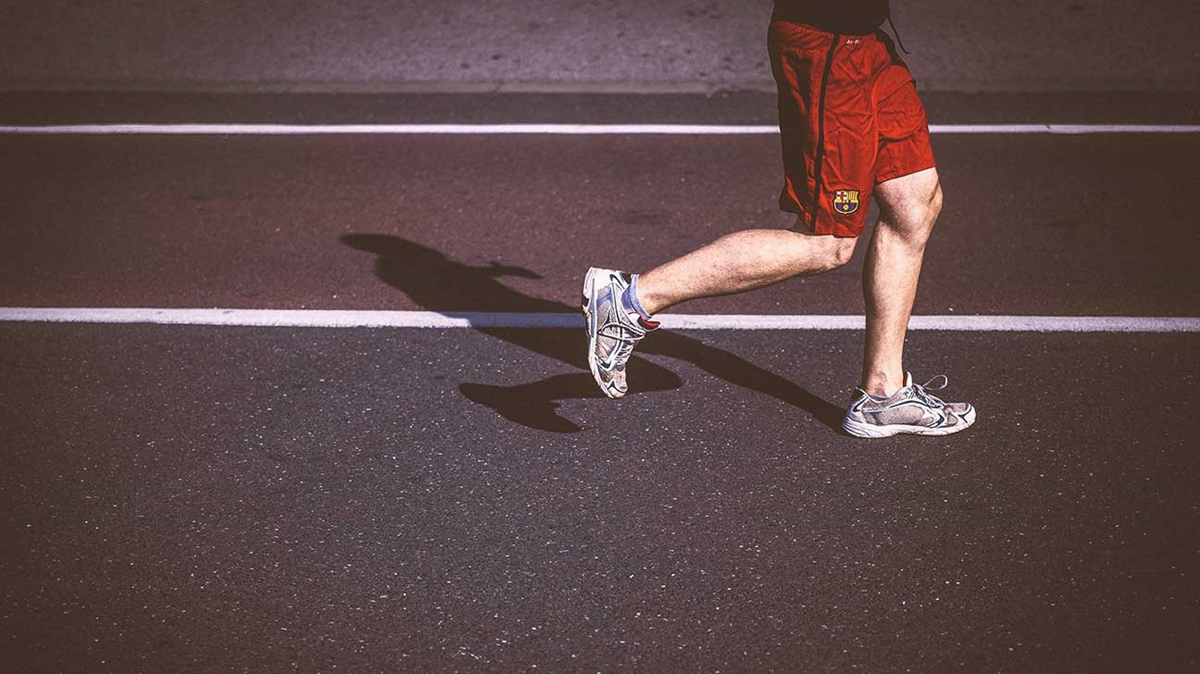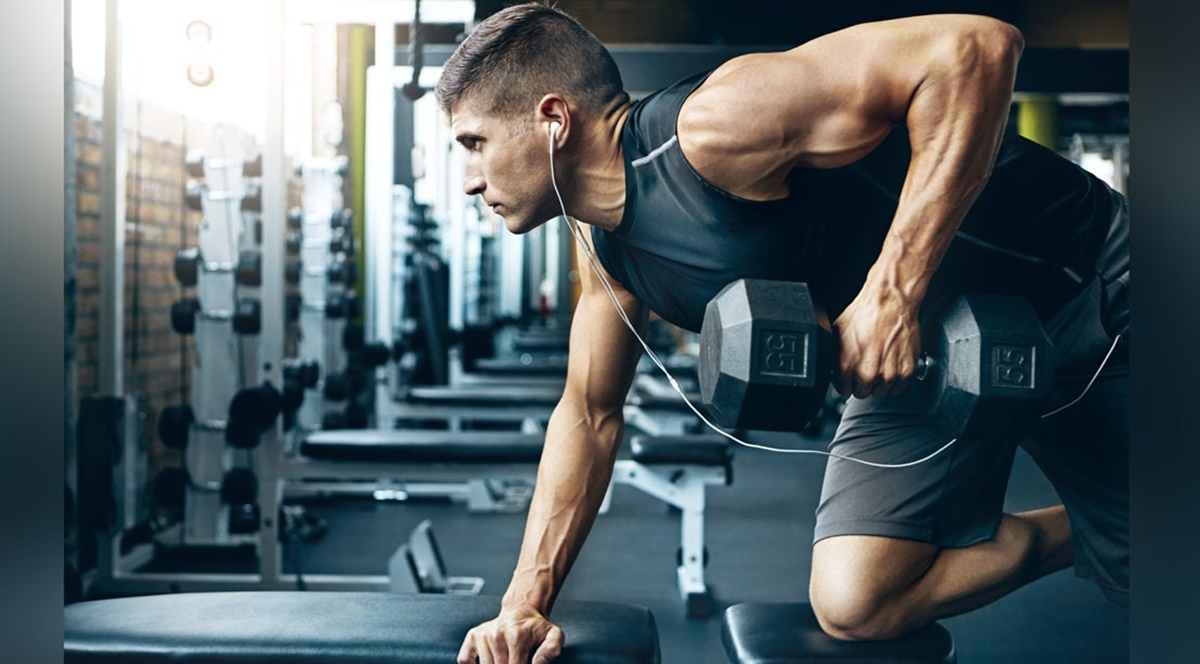

Featured
What Are Rows In Exercise
Published: October 1, 2023
Discover the benefits of incorporating rows into your exercise routine. With our featured workouts, you can strengthen your back and arms for a sculpted physique.
Introduction
Welcome to the world of exercise and fitness! Whether you are a seasoned fitness enthusiast or just starting out on your fitness journey, it’s important to have a well-rounded workout routine that targets all major muscle groups. One often overlooked exercise that can yield significant benefits is the row.
Rows are a versatile and effective exercise that primarily target the muscles in your back, but also engage other muscles such as the biceps, shoulders, and core. This compound exercise involves pulling a weight towards your body, mimicking the motion of rowing a boat. Rows can be performed using various equipment such as dumbbells, barbells, resistance bands, or even your own body weight.
So, why should you incorporate rows into your workout routine? The answer lies in the numerous benefits that rows offer. Not only do they help to build a strong and defined back, but they also improve posture, strengthen the grip, and enhance overall upper body strength. Rows are also an excellent exercise for correcting muscle imbalances and preventing injuries that can result from poor posture or weak back muscles.
Rows come in a variety of different types and variations to suit different preferences and fitness levels. Whether you prefer bent over rows, seated rows, inverted rows, or one-arm rows, there’s a type of row exercise that can cater to your needs and goals. Each variation targets slightly different muscle groups and allows for progression as you become stronger and more proficient.
Before jumping into any exercise, it’s important to learn and practice proper form and technique. Rows are no exception. Maintaining a neutral spine, engaging the core, and squeezing the shoulder blades together are key aspects of performing rows correctly. Incorrect form can lead to ineffective results and potential injuries. By mastering the right technique, you can maximize the benefits of rows and minimize the risk of injury.
Unfortunately, many people make common mistakes when performing rows. These errors can undermine the effectiveness of the exercise and increase the risk of injury. Understanding these mistakes and knowing how to avoid them is crucial for getting the most out of your rowing workouts.
Whether you’re a beginner or an advanced exerciser, there are modifications and progressions available to challenge yourself and keep your workouts engaging. By incorporating different grips, changing the resistance, or adding stability challenges, you can constantly challenge and stimulate your muscles to promote growth and improve performance.
Incorporating rows into your workout routine doesn’t have to be complicated. With a little knowledge and creativity, you can easily add rows to a full-body workout or a targeted back workout. The versatility of rows allows for customization based on your goals and preferences, making it a valuable exercise for all fitness levels.
Overall, rows are an essential exercise to add to your fitness routine. By targeting multiple muscle groups and offering a wide range of variations, rows contribute to overall strength, muscle development, and postural improvement. So, let’s dive into the world of rows and explore the various types, techniques, and benefits that this exercise has to offer!
Definition of Rows in Exercise
Rows, in the context of exercise, refer to a group of movements that involve pulling or rowing motions to target the muscles in the back, as well as other muscle groups that support the movement. These exercises are commonly performed to strengthen the back, improve posture, and promote overall upper body strength and stability.
The primary goal of row exercises is to engage and strengthen the muscles of the upper back, including the rhomboids, trapezius, and latissimus dorsi. These muscles are responsible for pulling and retracting the shoulder blades, as well as helping to stabilize the spine and maintain proper posture.
Row exercises can be performed using various equipment or body weight. Some of the common equipment used for rows include dumbbells, barbells, resistance bands, cable machines, and rowing machines. Each piece of equipment provides different resistance and challenges the muscles in slightly different ways.
There are several different types of row exercises, each targeting specific muscle groups and offering variations in movement patterns. The most common types include:
- Bent Over Rows: This is a classic row exercise that is typically performed with dumbbells or a barbell. It involves bending at the hips while maintaining a neutral spine and pulling the weight towards the torso.
- Seated Rows: This exercise is typically performed on a cable machine or a rowing machine. It involves sitting on a bench or machine with the legs extended and pulling the handles towards the body.
- Inverted Rows: Also known as body rows, this exercise is performed using a suspension trainer or a Smith machine. It involves lying on the ground or setting the bar at a height, grabbing hold of the handles or bar, and pulling the body towards the handles or bar.
- One-Arm Rows: This exercise can be performed with a dumbbell or a kettlebell. It involves stabilizing the body with one hand and pulling the weight towards the torso using the other arm.
The choice of row exercise depends on individual goals, equipment availability, and personal preferences. It’s important to note that proper form and technique are crucial for the effectiveness and safety of row exercises. Engaging the correct muscles, maintaining a neutral spine, and performing the movement through a full range of motion are key elements of performing rows correctly.
By incorporating row exercises into your workout routine, you can strengthen your back, improve posture, enhance upper body strength, and reduce the risk of injuries associated with weak back muscles. Whether you’re a beginner or an advanced exerciser, there are variations and progressions available to suit your fitness level and challenge your muscles.
Now that we have a clear understanding of what rows are and the different types of row exercises, let’s explore the benefits and importance of incorporating rows into your fitness routine!
Benefits and Importance of Rows
Rows offer numerous benefits and play a crucial role in any well-rounded workout routine. Incorporating row exercises into your fitness regimen can have a positive impact on your overall strength, posture, and muscle development. Let’s explore some of the key benefits and reasons why rows are important:
1. Back Strength and Muscle Development: Rows primarily target the muscles of the back, including the rhomboids, trapezius, and latissimus dorsi. These muscles are responsible for pulling and retracting the shoulder blades, which is essential for a strong and well-developed back. By regularly performing row exercises, you can enhance back strength, promote muscle growth, and improve overall posture.
2. Improved Posture: Poor posture is a common problem caused by factors such as prolonged sitting, weak back muscles, and imbalances between the chest and back muscles. Rows help correct these imbalances by strengthening the back muscles, pulling the shoulder blades back, and aligning the spine. As a result, incorporating rows into your routine can improve posture and reduce the risk of developing postural issues or back pain.
3. Enhanced Upper Body Strength: Rows are a compound exercise that engages multiple muscle groups in the upper body. In addition to targeting the back muscles, rows also work the biceps, shoulders, and core. This comprehensive engagement of muscles leads to improved overall upper body strength and functional fitness.
4. Strong Grip and Forearm Development: Gripping and pulling motions are integral to row exercises. As you perform rows, you engage the muscles in your hands, wrists, and forearms. Over time, this helps to develop grip strength and forearm muscles, which can have a positive impact on other exercises and activities that involve gripping and holding objects.
5. Injury Prevention and Rehabilitation: Weak back muscles can contribute to poor posture and increase the risk of injuries, such as lower back pain or strains. By strengthening the muscles of the back through row exercises, you can prevent these injuries and promote better spinal alignment. Additionally, rows can be beneficial for individuals undergoing rehabilitation for back or shoulder injuries, as they help to rebuild strength and stability in these areas.
6. Versatility and Accessibility: Rows can be performed using various equipment or modified to be done with just body weight. This versatility makes rows accessible to individuals with different fitness levels, equipment availability, or space constraints. Whether you have access to a full gym or prefer home workouts, you can incorporate row exercises into your routine easily.
7. Mental Focus and Mind-Muscle Connection: Row exercises require a certain degree of focus and concentration to maintain proper form. By focusing on the movement and connecting your mind with the muscles being worked, you can enhance your mind-muscle connection. This heightened awareness can lead to better muscle activation, improved coordination, and more efficient movement patterns.
Overall, the benefits and importance of incorporating row exercises into your workout routine cannot be overstated. From building a strong back and improving posture to enhancing upper body strength and preventing injuries, rows offer a myriad of advantages. Now that we understand the benefits of rows, let’s explore the different types of row exercises and how to perform them with proper form and technique.
Different Types of Row Exercises
Row exercises come in a variety of types and variations, each targeting specific muscles in the back and providing unique challenges. By incorporating these different types of row exercises into your routine, you can keep your workouts varied, target different muscle groups, and continue to progress. Let’s explore some of the main types of row exercises:
1. Bent Over Rows: Bent over rows are a classic row exercise that primarily targets the muscles in the upper and middle back. This exercise can be done with dumbbells, barbells, or kettlebells. To perform bent over rows, hinge forward at the hips while maintaining a neutral spine and grab the weights with an overhand grip. From there, pull the weights towards your torso, squeezing your shoulder blades together as you lift. Bent over rows can be done with one arm at a time or with both arms simultaneously.
2. Seated Rows: Seated rows are commonly performed on cable machines or rowing machines. This exercise targets the muscles of the upper back, biceps, and shoulders. To perform seated rows, sit on the machine with your knees slightly bent and feet firmly planted. Grab the handles with an overhand grip, keep your back straight, and pull the handles towards your body, squeezing your shoulder blades together at the end of the movement. Seated rows can also be done with one arm at a time or with both arms simultaneously.
3. Inverted Rows: Inverted rows, also known as body rows, are an excellent bodyweight exercise that targets the muscles of the back, shoulders, and core. This exercise is performed using a suspension trainer, such as TRX straps, or a Smith machine. To do inverted rows, set the straps at an appropriate height or adjust the bar of the Smith machine. Lie on the ground or position yourself under the bar, grab hold of the handles or bar with an overhand grip, and keep your body straight. Pull your chest towards the handles or bar, keeping your core engaged and shoulder blades squeezed together. Inverted rows can be modified to make them easier or more challenging depending on the angle of your body.
4. One-Arm Rows: One-arm rows are a unilateral exercise that targets the muscles of the back, shoulders, and core, as well as helps to correct muscular imbalances. This exercise can be performed with a dumbbell or kettlebell. To do one-arm rows, find a bench or stable surface to support yourself with one hand. Place the opposite knee and hand on the bench, while holding the weight in the other hand. With a neutral spine, pull the weight towards your torso, keeping your elbow close to your body. Squeeze your shoulder blade as you lift and lower the weight. Repeat on the other side.
These are just a few examples of the different types of row exercises available. Other variations include single-arm kettlebell rows, T-bar rows, and supported rows. The choice of row exercise depends on your equipment availability, preferences, and fitness goals.
When performing any type of row exercise, it’s important to focus on proper form and technique. Keep your spine neutral, engage your core, and avoid excessive momentum or swinging. By maintaining good form, you can maximize the benefits of row exercises and minimize the risk of injuries.
Now that we have explored the different types of row exercises, let’s dive into the proper form and technique for performing rows to get the most out of your workouts.
Proper Form and Technique for Rows
Performing rows with proper form and technique is essential to maximize the benefits of the exercise and minimize the risk of injuries. Whether you’re performing bent over rows, seated rows, inverted rows, or any other variation, following these guidelines will help you maintain good form:
1. Positioning and Alignment: Start by positioning your body correctly. Maintain a neutral spine by keeping your back straight and avoiding excessive rounding or arching. Engage your core muscles to provide stability throughout the movement. Stand or sit with proper posture, shoulders back, and chest up, avoiding slouching or hunching over.
2. Grip and Hand Placement: Pay attention to your grip and hand placement. Depending on the type of row exercise, you may use an overhand grip, underhand grip, or alternate grips. Ensure your grip is secure but not overly tight to avoid unnecessary stress on your wrists and hands.
3. Shoulder Blade Engagement: For optimal activation of the back muscles, focus on squeezing your shoulder blades together at the peak of the rowing motion. As you pull the weight towards your torso, envision pinching a pencil between your shoulder blades. This will help target the desired muscle groups and promote proper shoulder and back alignment.
4. Range of Motion: Aim to perform rows through a full range of motion. Ensure that you fully extend your arms when starting the exercise and pull the weight as close to your body as possible while maintaining good form. This will allow for maximum muscle engagement and activation.
5. Controlled Movement: Avoid using momentum or relying on excessive swinging to perform the rows. Instead, focus on a slow and controlled movement, emphasizing the muscle contraction and engagement throughout the exercise. By controlling the weight, you’ll challenge your muscles and increase the effectiveness of the exercise.
6. Breathing Technique: Remember to breathe properly throughout the exercise. Inhale before initiating the rowing motion and exhale as you pull the weight towards your body. Continue to breathe naturally and rhythmically as you perform the repetitions.
7. Avoiding Excessive Strain: It is important to avoid any excessive strain on your lower back or other joints when performing rows. Maintain a neutral spine throughout the exercise and avoid using weights that are too heavy for you to handle with proper form. If you experience any discomfort or pain, adjust the weight or seek guidance from a fitness professional.
8. Warm-up and Stretching: Prior to performing rows, it’s beneficial to warm up with some light cardio and dynamic stretches to increase blood flow to the muscles and improve joint mobility. After your workout, take the time to stretch the muscles involved in row exercises, especially the back, shoulders, and arms.
By following these guidelines for proper form and technique, you can safely and effectively perform rows to target the intended muscle groups and achieve optimal results. Remember, quality over quantity is key, so focus on the quality of each rep rather than the number of reps you can perform.
Now that we have covered the proper form and technique for rows, let’s explore some common mistakes to avoid to ensure you are getting the most out of your rowing workouts.
Common Mistakes to Avoid
While row exercises can be highly effective when performed correctly, there are several common mistakes that people often make. Recognizing and avoiding these mistakes will help you get the most out of your rowing workouts and reduce the risk of injury. Let’s explore some of the most common mistakes to avoid:
1. Rounded Back: One of the most common mistakes during rows is rounding the back or hunching over. This not only reduces the effectiveness of the exercise but also puts unnecessary stress on the spine and increases the risk of injury. Keep your back straight and maintain a neutral spine throughout the entire movement.
2. Excessive Momentum: Using momentum to perform the rowing motion is another mistake to avoid. Swinging the weight or pulling it too quickly diminishes the muscle engagement and reduces the effectiveness of the exercise. Focus on a slow and controlled movement, emphasizing muscle contraction and engagement.
3. Insufficient Shoulder Blade Squeeze: Failure to properly squeeze the shoulder blades together at the peak of the rowing motion is a common mistake. Engaging the back muscles and focusing on squeezing the shoulder blades will target the desired muscle groups effectively. Be mindful of this squeeze throughout each repetition.
4. Incorrect Hand Placement: Placing the hands too wide or too narrow can lead to improper muscle engagement and compromise form. Ensure that your hands are placed slightly wider than shoulder-width apart, providing a stable and balanced grip for the exercise.
5. Neglecting Core Engagement: The core plays a significant role in stabilizing the body during row exercises. Neglecting to engage the core can lead to poor form and compromised stability. Keep the core muscles activated for proper alignment and to prevent excessive strain on the lower back.
6. Using Excessive Weight: Overloading the weights used during rows is a common mistake that can lead to incorrect form and potential injury. It’s important to choose a weight that allows you to maintain proper form and complete the movement with control. Gradually increase the weight as your strength and proficiency improve.
7. Neglecting Full Range of Motion: Not performing the rows through a full range of motion is a common mistake that limits the effectiveness of the exercise. Ensure that you fully extend your arms at the beginning of the movement and pull the weight as close to your torso as possible while maintaining proper form.
8. Focusing Solely on the Arms: Rows are not just an arm exercise; they primarily target the muscles of the back. Focusing solely on the arm movement and neglecting the engagement of the back muscles can lead to imbalanced muscle development and reduced effectiveness of the exercise. Prioritize proper form and engage the back muscles throughout the movement.
9. Holding Your Breath: Holding your breath or forgetting to breathe properly during rows can lead to increased strain and reduced performance. Remember to breathe naturally, inhaling before initiating the rowing motion and exhaling as you pull the weight towards your body.
10. Lack of Warm-up and Stretching: Skipping a proper warm-up and neglecting post-workout stretching is a mistake that can increase the risk of injury and hinder recovery. Prioritize a warm-up routine that includes light cardio and dynamic stretches to prepare the muscles for the row exercises. After your workout, ensure you stretch the muscles involved in row exercises to promote flexibility and prevent muscle tightness.
Avoiding these common mistakes will help you maximize the benefits of row exercises and reduce the risk of injury. By focusing on proper form, engaging the correct muscles, and practicing good technique, you can optimize your rowing workouts and achieve your fitness goals effectively.
Now that we have covered the common mistakes to avoid, let’s explore some variations and progressions for rows to keep your workouts challenging and exciting!
Variations and Progressions for Rows
Variations and progressions are key to keeping your workouts challenging and preventing plateaus in your fitness journey. Rows offer a wide range of options for variations and progressions to continue challenging your muscles and promoting growth. Let’s explore some of the variations and progressions you can incorporate into your rowing workouts:
1. Grip Variations: Altering your grip placement can target different muscles and provide a fresh stimulus to your rows. Experiment with overhand, underhand, wide, narrow, and neutral grip variations. Each grip variation puts emphasis on different parts of the back, biceps, and forearms, allowing you to target specific muscle groups or correct imbalances.
2. Unilateral Rows: Performing row exercises with one arm at a time is a great way to challenge your muscles and enhance stability. Unilateral rows require more core engagement and promote equal development on both sides of the body. Incorporate one-arm dumbbell rows, one-arm cable rows, or one-arm kettlebell rows to your routine for a different challenge.
3. Incline Rows: Elevating the upper body during rows creates a different angle of pull and engages the muscles in the upper back and rear deltoids to a greater extent. Use an adjustable bench or an incline row machine to perform incline rows. This variation targets the muscles from a different angle, providing a unique stimulus to your back muscles.
4. Suspension Trainer Rows: Using suspension trainers, such as TRX straps, enables you to perform challenging row exercises that engage your entire body. Adjust the straps to an appropriate length and perform inverted rows while holding onto the handles. Suspension trainer rows require significant core stability and help build overall strength and body control.
5. Weighted Rows: If you have mastered bodyweight rows, adding extra resistance can be a great way to progress. Incorporate weighted vests, dumbbells, or barbells to increase the intensity of your row exercises. Gradually increase the weight and challenge yourself within your capabilities to continue building strength and muscle mass.
6. Eccentric Rows: Eccentric training focuses on emphasizing the lengthening phase of the muscle contraction. For rows, this involves slowing down the lowering phase or negative part of the movement. Control the weight as you lower it back to the starting position, taking a slower count than the lifting phase. Eccentric rows can enhance muscle growth, strength, and control.
7. Plyometric Rows: Introduce power and explosiveness into your row exercises with plyometric rows. This variation involves adding a jump or explosive pull at the end of the rowing motion. This can be achieved by using lighter weights, focusing on the acceleration of the pulling movement, or incorporating jumping movements into your rows. Plyometric rows can improve power, athleticism, and overall strength.
8. Progressive Overload: Continuously challenging your muscles with increased resistance, more repetitions, or reduced rest time is essential for progression. Gradually increase the weight lifted, increase the number of sets or repetitions, or decrease the rest time between sets. Progressive overload ensures that you are consistently challenging your muscles and promoting growth and strength gains.
9. Superset or Compound Exercises: Combine row exercises with other compound movements to create supersets or compound exercises. For example, perform rows followed immediately by push-ups or overhead presses. This combination utilizes different muscle groups and enhances overall workout efficiency and calorie expenditure.
10. Implementing Tempo Changes: Manipulating the tempo of your rows can provide a different stimulus to your muscles. Experiment with slower eccentric phases, pauses at different points of the movement, or explosive concentric phases. Tempo changes can challenge your muscles in new ways and promote muscle growth and strength gains.
These are just a few examples of the variations and progressions you can incorporate into your rowing workouts. Mixing up your routine with different exercises and techniques keeps your workouts fresh, challenges your muscles, and helps you avoid plateaus.
Remember to listen to your body, progress at your own pace, and prioritize proper form and technique. Consulting with a fitness professional can also be beneficial in designing a specialized program tailored to your goals and abilities.
Now that we have explored variations and progressions for rows, it’s time to explore how to incorporate rows into your overall workout routine to reap the full benefits of this exercise.
Incorporating Rows into Your Workout Routine
Now that you have learned about the different types of row exercises, proper form and technique, and variations and progressions, it’s time to explore how to incorporate rows into your overall workout routine. Adding rows to your routine is relatively simple and can be done in a variety of ways. Here are some tips on how to effectively include rows:
1. Full-Body Workouts: If you follow a full-body workout routine, consider including rows as one of the compound exercises in your routine. Perform rows alongside other exercises that target different muscle groups to create a balanced and comprehensive workout. This allows you to work multiple muscles in a single session and maximize your time at the gym.
2. Back-Focused Workouts: For individuals looking to specifically target the back muscles, creating a back-focused workout routine is a great option. Dedicate an entire workout session or part of a workout to performing various row exercises. Include different types of row variations, focusing on different areas of the back, to ensure complete development and to avoid overtraining the same muscles.
3. Upper Body Split: If you follow a split routine that focuses on the upper body, consider dedicating a day solely to working the upper body muscles. Incorporate rows along with other exercises that target the chest, shoulders, and arms. This allows for targeted and specific training of the upper body muscles, promoting balanced development and strength gains across all major muscle groups.
4. Supersets or Circuits: Another way to incorporate rows into your routine is by utilizing supersets or circuits. Pair row exercises with complementary movements such as push-ups, shoulder presses, or bicep curls. This approach allows you to work different muscle groups consecutively, while also providing active rest periods for the targeted muscles. Supersets and circuits increase the efficiency of your workouts, helping you burn more calories and build strength in less time.
5. Progressive Overload: Ensure that you progressively overload your rows by increasing the resistance, volume (sets and repetitions), or intensity. Gradually increase the weights used, add more sets or repetitions, or decrease the rest time between sets. This progression ensures that you are continually challenging your muscles and promoting growth and strength gains over time.
6. Prioritize Recovery: Adequate recovery is essential for muscle growth and overall fitness. Incorporate rest days into your weekly workout routine to allow your muscles to recover and repair. Pay attention to nutrition, hydration, and sleep to support the recovery process. By prioritizing recovery, you’ll be able to perform rows and other exercises at your best and reduce the risk of overtraining or injuries.
7. Seek Guidance: If you are new to rows or unsure about incorporating them into your routine, consider seeking guidance from a qualified fitness professional. They can assess your specific needs, goals, and abilities, and develop a customized program that includes rows and other exercises to help you achieve optimal results.
Remember to always prioritize proper form and technique when performing rows. This will not only maximize the benefits of the exercise but also reduce the risk of injuries. If you experience any pain or discomfort during your workouts, consult with a healthcare professional or fitness expert.
Incorporating rows into your workout routine is a great way to strengthen your back, improve posture, and enhance overall upper body strength. By following these tips and customizing your routine to suit your goals, you’ll be on your way to reaping the full benefits of rows and achieving your fitness aspirations.
Now that you have a deeper understanding of incorporating rows into your workout routine, let’s conclude our exploration of this versatile and effective exercise.
Conclusion
Congratulations! You have now gained a comprehensive understanding of rows in exercise, ranging from their definition and various types to the importance of proper form, common mistakes to avoid, and ways to incorporate them into your workout routine.
Rows are a versatile and effective exercise that target the muscles of the back, improve posture, enhance upper body strength, and prevent injuries. By performing rows correctly, engaging the correct muscle groups, and avoiding common mistakes, you can maximize the benefits of this exercise and minimize the risk of injury.
Remember, row exercises come in various forms, such as bent over rows, seated rows, inverted rows, and one-arm rows. Each type targets different muscles and offers unique challenges. Incorporate these different variations into your routine to keep your workouts fresh and engaging.
When performing rows, always prioritize proper form and technique. Maintain a neutral spine, engage your core, and focus on squeezing your shoulder blades together. Avoid rounding your back, using excessive momentum, or neglecting core engagement.
Additionally, consider implementing variations and progressions into your rowing workouts. Experiment with different grip positions, try unilateral rows, or add weights to increase the challenge. By continuously challenging your muscles and progressing over time, you’ll achieve better results and prevent plateaus in your fitness journey.
Lastly, incorporating rows into your workout routine can be done through full-body workouts, back-focused sessions, upper body splits, or by incorporating supersets and circuits. Choose the approach that aligns with your goals and preferences, and remember to prioritize recovery to support muscle growth and overall well-being.
Now that you have the knowledge and tools to incorporate rows into your workouts effectively, start implementing these exercises and experience the benefits for yourself. So grab those dumbbells, resistance bands, or machines, and row your way to a stronger, more defined back and improved overall fitness.
